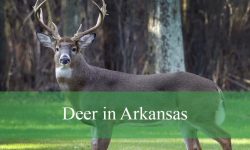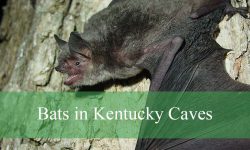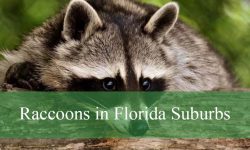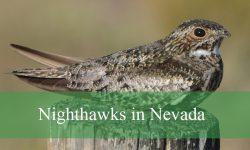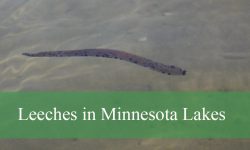Beavers are some of the most iconic mammals living in Oregon’s rivers, marshes, and forested waterways. Their presence shapes landscapes, supports wildlife, and even influences how rivers flow. Most people recognize them for their dams and flat tails. Yet the real story of Oregon’s beavers is far more complex and surprising.
These highly skilled engineers transform entire watersheds with behaviors refined over thousands of years. The ponds they create become habitats for fish, amphibians, birds, and countless other creatures. Their engineering even helps mitigate drought and wildfire effects which are growing concerns across the Pacific Northwest.
This article uncovers the hidden secrets behind beavers in Oregon. Their behaviors, ecological influence, and survival strategies reveal a master builder whose impact reaches far beyond the water’s edge.
Understanding Oregon’s Beavers
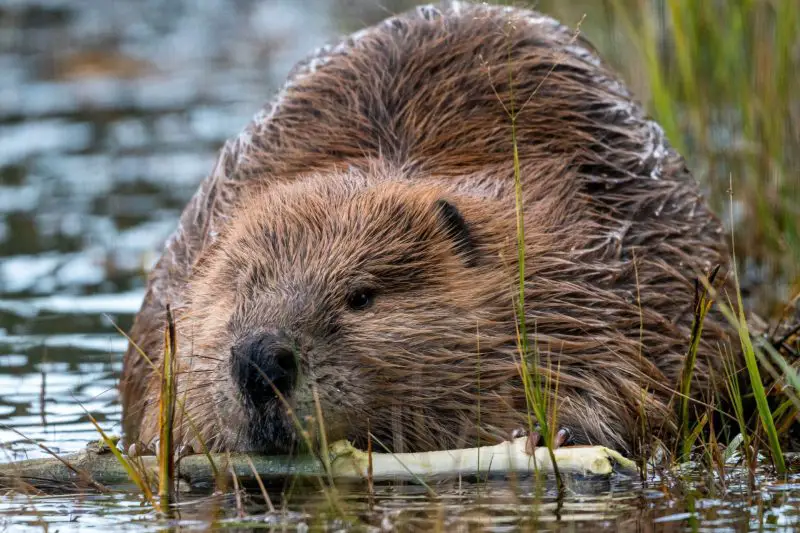
What Beavers Really Are
Beavers belong to the species Castor canadensis. They are semi aquatic mammals with powerful incisors, webbed feet, and thick waterproof fur. Their unique adaptations allow them to manipulate wood, forage underwater, and build complex structures that alter their environments.
Beavers have specialized digestive systems that break down tough plant fibers. They feed on bark, aquatic plants, leaves, and stems. Their ability to utilize abundant but low-energy foods has made them successful across North America.
Why Oregon Is Perfect for Beavers
Oregon’s rivers, streams, wetlands, and forests provide ideal habitat. The state’s dense willow, alder, poplar, and cottonwood stands offer abundant building materials. Its rainy climate ensures steady water flow that supports beaver colonies year round.
From the coastal rainforest to the Cascade streams and the high desert waterways of eastern Oregon, beavers adapt to landscapes that differ dramatically in temperature and rainfall.
Where Beavers Live in Oregon
Beavers inhabit nearly every watershed in Oregon. They dig burrows into riverbanks or construct lodges made of sticks and mud. Lodges provide safe internal chambers where beavers sleep, groom, raise kits, and store food.
Their presence is most noticeable in quieter river stretches, beaver ponds, riparian wetlands, and forested streams.
The Engineering Genius of Beavers
Why Beavers Build Dams
Beavers build dams to create deep ponds that protect them from predators. Deep water allows them to swim safely, access lodges, and store food underwater. These ponds also slow river flow which benefits numerous species.
Their engineering instincts are so strong that they will attempt to build or repair dams even when exposed to artificial running water sounds.
Complex Lodge Design
Beaver lodges contain underwater entrances that prevent predators from entering. Inside, chambers remain dry and insulated. Beavers add fresh layers of mud and sticks each season which strengthens the structure.
Lodges remain stable during Oregon’s cold winters when ice forms on rivers. This stability ensures year round protection for the colony.
Water Level Management
Beavers constantly modify their dams by adding or removing material. This keeps pond depth optimal. Their instinctive adjustments mimic natural hydrological engineering.
This water control influences flooding patterns, groundwater recharge, and vegetation growth.
Beavers as Keystone Species in Oregon
Creating Habitat for Wildlife
Beaver ponds support frogs, trout, salamanders, waterfowl, and mammals like otters and muskrats. Slow moving water encourages insect life which supports fish populations.
Without beavers many Oregon streams would become shallow, warm, and less suitable for native species.
Supporting Salmon Populations
A surprising secret is that beavers help salmon. Their ponds give juvenile salmon calm water to rest and grow. They also create side channels that protect young fish during high flow events.
In many Oregon watersheds, salmon restoration projects now incorporate beaver activity intentionally.
Influencing Plant Communities
Beavers shape vegetation patterns by cutting down trees and promoting the growth of willow and cottonwood stands. These fast growing plants thrive in the moist conditions beavers create.
This cycle maintains riparian diversity.
Hidden Behaviors You Never Knew About
Tree Selection
Beavers are selective. They choose trees based on size, species, and distance from water. Willow and cottonwood are preferred for their bark and flexibility. Larger trees may be cut for dam reinforcement rather than food.
Beavers rarely take more than needed. Their cutting encourages regrowth and forest renewal.
Family Cooperation
Beavers live in family groups consisting of a breeding pair, yearlings, and new kits. Each family member plays a role in building, maintaining, and foraging.
Cooperation is vital. Yearlings often help raise new kits and assist in dam repair.
Underwater Communication
Beavers communicate by tail slaps, vocalizations, scent mounds, and underwater movements. A loud tail slap warns the colony of danger. Scent marking defines territory and prevents conflict with neighboring beaver families.
The Secret Lives of Beaver Kits
Birth and Early Life
Beaver kits are born in spring. They open their eyes at birth and can swim within days. Kits nurse for several weeks and begin exploring outside the lodge by early summer.
Their early experiences shape their understanding of water flow, building materials, and predator avoidance.
Learning Through Observation
Young beavers learn primarily by watching adults. They practice carrying sticks, digging, and repairing dams. This training period prepares them to establish new territories at two or three years old.
Leaving the Colony
Once mature, young beavers disperse to find new waterways. This dispersal expands beaver presence across Oregon and ensures healthy genetic diversity.
How Beavers Transform Oregon Rivers
Slowing River Flow
Beaver dams reduce water velocity. This slows erosion and allows sediment to settle. Over time, ponds deepen and expand.
This slowing effect benefits fish species that require calmer water for spawning and feeding.
Increasing Wetland Formation
As dams hold water, wetlands form around beaver colonies. Wetlands support diverse plants and serve as breeding grounds for amphibians, insects, and birds.
In Oregon’s high desert regions, beaver wetlands create rare oases.
Improving Water Quality
Dams filter sediment, trap nutrients, and reduce pollutants. Water leaving a beaver pond is often cleaner than water entering it.
Beavers function as natural water filtration engineers.
Beavers and Oregon’s Climate Challenges
Mitigating Drought
During dry seasons, beaver ponds store water that would otherwise flow downstream. This reservoir effect sustains wildlife and plants during Oregon’s summer droughts.
Groundwater recharge increases around beaver ponds as water seeps into surrounding soils.
Reducing Wildfire Spread
Wetland areas created by beavers can slow wildfire movement. Moist soils and saturated ground vegetation create natural fire breaks.
These wet zones offer refuge for animals escaping fire.
Buffering Floods
During heavy rainfall, beaver dams help reduce flood peaks. Their ponds absorb sudden surges and release water slowly. This buffering reduces downstream erosion.
Feeding Habits of Oregon Beavers
Winter Food Caches
In late fall, beavers store branches underwater near their lodge. These caches freeze beneath the ice but remain accessible. Winter diets rely heavily on this stored food.
Summer Feeding
During summer, beavers eat aquatic plants, leaves, bark, and roots. Their diet shifts based on seasonal availability. Oregon’s lush vegetation supports year round feeding.
Bark Preferences
Beavers prefer softer bark species like aspen, willow, alder, and cottonwood. Harder woods are often used for construction rather than food.
Beavers in Oregon Forests and Mountains
Coastal Forest Influence
In western Oregon’s moist forests, beavers create ponds that serve as critical frog and salamander breeding grounds. These wetlands remain stable even during drier periods.
Cascade Mountain Streams
Beaver activity along mountain rivers helps stabilize steep banks. Their dams slow the rapid flow common in mountain streams, benefiting trout and salmon.
High Desert Rivers
In eastern Oregon’s arid landscapes, beavers create water rich pockets surrounded by dry sagebrush. These areas support migratory birds and mammals like mule deer and pronghorn.
How Beavers Shape Human Landscapes
Agriculture Interactions
Beavers sometimes flood fields or irrigation ditches. Their dams can block culverts or alter water distribution. However, many farmers now work with beavers rather than removing them.
Water retention supported by beavers often benefits agriculture during drought periods.
Urban and Suburban Settings
Beavers occasionally enter city parks, golf courses, and drainage systems. Their presence in urban streams can improve water quality and habitat diversity.
Small deterrents or exclusion devices often resolve conflicts.
Conflict Solutions
Flow devices, fencing, and selective tree protection help manage beaver activity. These non lethal methods allow humans and beavers to coexist.
Myths and Misunderstandings About Beavers
Myth: Beavers Destroy Rivers
Beaver dams do not destroy rivers. They create natural ponds that expand ecological diversity. Rivers adapt and change shape over time.
Myth: Beavers Kill Trees Without Reason
Tree cutting supports beaver survival and regrowth. Many cut trees resprout vigorously.
Myth: Beavers Cause Floods
Beaver ponds typically reduce flooding. They slow runoff which decreases river surge speeds.
Beaver Adaptations Built for Water
Waterproof Fur
Beaver fur has dense underlayers that trap air. This keeps their skin dry and maintains body temperature even in cold Oregon rivers.
Webbed Hind Feet
Webbing increases swimming speed and maneuverability. Beavers can stay underwater for more than ten minutes.
Powerful Incisors
Their incisors grow continuously. Beavers gnaw constantly to maintain tooth length and strength.
Seasonal Behavior Changes
Spring Expansion
In spring, beavers repair dams damaged by winter storms. They also expand lodges and begin feeding heavily as vegetation returns.
Summer Activity
Summer is active feeding season. Warm temperatures increase plant growth which supports beaver families.
Fall Preparation
Fall is the busiest season for beavers. They collect food, reinforce dams, and strengthen lodges.
Winter Dormancy
Although active, beavers remain mostly inside lodges during winter. They rely on food caches stored earlier.
Beavers as a Part of Oregon’s Heritage
Cultural Importance
Beavers are Oregon’s official state animal. Their historical role in shaping landscapes and supporting Indigenous communities is significant.
Native American Knowledge
Indigenous tribes recognized beavers’ importance for fisheries, water regulation, and habitat creation. Their traditional ecological knowledge included understanding beaver influence on river systems.
Modern Conservation
Conservationists view beavers as natural allies in habitat restoration. Many ecological projects now actively encourage beaver reintroduction.
FAQs About Beavers in Oregon Rivers
Are beavers dangerous
They avoid people. They only defend themselves if cornered.
Do beavers help salmon
Yes. Beaver ponds provide critical habitat for juvenile salmon.
How long do beavers live
Many live 10 to 15 years in the wild.
Do all beavers build dams
Not all. Some live in existing waterways without needing dams.
Why do beavers slap their tails
A tail slap warns the colony of potential danger.
Can beavers flood property
Sometimes. Flow devices can prevent property flooding.
What do beavers eat
They eat bark, leaves, roots, and aquatic vegetation.
How many beavers live in a colony
Usually a breeding pair, yearlings, and new kits.
Are beavers active year round
Yes. They remain active even in winter.
Where do beavers sleep
Inside lodges with dry chambers above water level.
Conclusion
Beavers in Oregon rivers represent one of nature’s most impressive engineering forces. Their dams and lodges shape landscapes, support wildlife, regulate water flow, and create wetlands that transform entire ecosystems. Their behaviors reveal intelligence, cooperation, and adaptation that few other mammals display.
As Oregon faces challenges involving drought, wildfire, habitat loss, and water scarcity, beavers provide natural solutions that benefit both wildlife and people. Understanding their hidden secrets deepens appreciation for the intricate connections between rivers, forests, wetlands, and the animals that shape them.
Beavers are far more than dam builders. They are ecological architects whose presence enriches Oregon’s lands and waters in remarkable ways.

